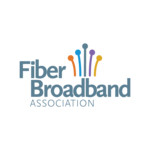White paper highlights best practices for microtrenching to accelerate fiber deployment
WASHINGTON–(BUSINESS WIRE)–#DigitalEquityGap–The Fiber Broadband Association today announced a new best practice white paper that explores microtrenching, an advantageous fiber broadband deployment method. The report compares microtrenching amongst other deployment methods as a valuable option in the fiber broadband construction toolkit and it also details the scrutiny that microtrenching faces, success stories, and best practices. The white paper finds that microtrenching is cost-effective and proven to speed installation and the connection to the symmetrical gigabit-capable networks needed to establish digital equity and close the rural digital divide.
“To some, fiber has an unfounded reputation for being expensive to deploy. However, the bulk of the expense lies in the installation and restoration. The Fiber Broadband Association wants to help broadband network builders understand every deployment option and adopt best practices for maximizing efficiency, speed of deployment, and to minimize cost,” said Gary Bolton, President and CEO of the Fiber Broadband Association. “Given the unprecedented level of fiber that is required to connect all Americans to reliable internet, innovative methods of fiber deployment are paramount. This white paper is the latest research in our extensive library of resources to help operators, service providers, utilities, cooperatives, and more deliver high-speed broadband quickly and to more households.”
The new Fiber Broadband Association white paper explores multiple fiber deployment styles, including microtrenching, horizontal directional drilling, plowing, conventional trenching, and missile boring. In terms of cost, conventional trenching can be roughly five times the cost of microtrenching. From a time perspective, microtrenching reduces one-third of the time it takes for a fiber installation using traditional methods, in some cases, moving from days to hours.
Installing new utilities, like fiber, brings concerns about damage to previously installed utilities infrastructure (such as gas lines and water pipes). The white paper features a risk profile between the different deployment styles by investigating the average strikes (damage to an existing utility that causes a service failure) per mile. The profile reveals that microtrenching had the lowest (0.03) strikes per mile, compared to conventional trenching with the highest (13.97) strikes per mile. So, while damage and risk are unavoidable, microtrenching can be regarded as a deployment style with relatively high output and low utility damage risk.
“While the white paper does address the benefits and capabilities of microtrenching, we encourage every network builder to consider all installation factors to determine its best path forward,” said Deborah Kish, Vice President of Research and Workforce Development at Fiber Broadband Association. “We wanted to highlight in this white paper that microtrenching is a viable option for fiber deployment due to its lower cost per foot and reduced impact on the public domain in dense areas. However, it remains critical that pros and cons are weighed for any network construction because no singular deployment style is perfect. For example, plowing is one of the fastest means of installation but creates considerably more spoil than microtrenching. So, priorities must be considered.”
The microtrenching white paper was created by a subset of subject matter experts from the Fiber Broadband Association’s Deployment Specialists Committee.
About the Fiber Broadband Association
The Fiber Broadband Association is the largest and only trade association that represents the complete fiber ecosystem of service providers, manufacturers, industry experts, and deployment specialists dedicated to the advancement of fiber broadband deployment and the pursuit of a world where communications are limitless, advancing quality of life and digital equity anywhere and everywhere. The Fiber Broadband Association helps providers, communities, and policy makers make informed decisions about how, where, and why to build better fiber broadband networks. Since 2001, these companies, organizations, and members have worked with communities and consumers in mind to build the critical infrastructure that provides the economic and societal benefits that only fiber can deliver. The Fiber Broadband Association is part of the Fibre Council Global Alliance, which is a platform of six global FTTH Councils in North America, LATAM, Europe, MEA, APAC, and South Africa. Learn more at fiberbroadband.org.
Contacts
Press Contact:
Ashley Schulte
Connect2 Communications for the Fiber Broadband Association
FBA@connect2comm.com







